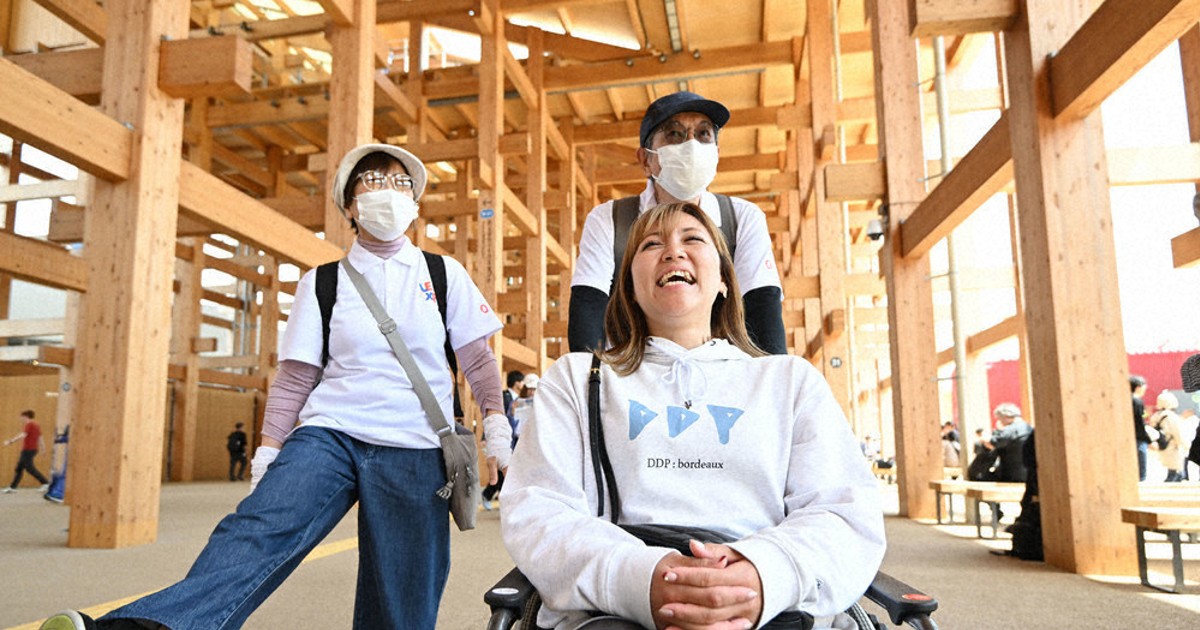EXPO Focus: Smiles for Wheelchair Users – Accessibility Takes Center Stage
Revolutionizing accessibility at major events is no longer a luxury, but a necessity. This year's EXPO is proving this point, with a significant focus on ensuring wheelchair users have a positive and inclusive experience. From improved ramps and wider walkways to dedicated seating areas and accessible restrooms, the event organizers are setting a new standard for inclusivity. This article dives into the innovative solutions implemented to guarantee smiles for wheelchair users at the EXPO.
Beyond Ramps: A Multi-Faceted Approach to Accessibility
The EXPO's commitment to accessibility extends far beyond simply meeting minimum requirements. Organizers have implemented a comprehensive strategy encompassing several key areas:
Enhanced Physical Accessibility:
- Improved Ramps and Pathways: Steeper inclines have been replaced with gentler slopes, ensuring easier navigation for wheelchair users and those with mobility aids. Wider pathways reduce congestion and improve maneuverability.
- Accessible Restrooms: The EXPO boasts a significantly increased number of accessible restrooms, strategically located throughout the venue for convenient access. These restrooms are spacious, equipped with grab bars, and designed for optimal comfort and privacy.
- Dedicated Seating Areas: Ample seating areas with clear sightlines are available throughout the EXPO, ensuring wheelchair users can easily participate in all events and presentations. These areas are strategically placed to minimize travel distances.
- Accessible Transportation: Dedicated shuttle services and clearly marked accessible parking spaces have been provided to facilitate convenient arrival and departure.
Technological Advancements for Accessibility:
- Interactive Maps and Wayfinding: A user-friendly, accessible mobile app provides real-time information about accessible routes, facilities, and services. This technology reduces confusion and enhances the overall user experience.
- Assistive Listening Devices: Hearing assistance devices are readily available for attendees with hearing impairments, ensuring everyone can fully participate in the events and presentations.
- Sign Language Interpreters: Trained sign language interpreters are present at key events and presentations to cater to the needs of deaf and hard-of-hearing attendees.
Focusing on User Experience:
- Accessible Information: All event information, including schedules and maps, is available in accessible formats, such as large print and Braille.
- Trained Staff: Staff members are extensively trained on accessibility protocols and are readily available to assist wheelchair users with any needs. Their knowledge and proactive approach enhance the overall experience.
- Feedback Mechanisms: Clear channels are in place for attendees to provide feedback on their experiences, enabling organizers to continuously improve accessibility measures in future events.
The Impact of Inclusive Design: A Ripple Effect
The EXPO's dedication to wheelchair accessibility goes beyond simply complying with regulations. It demonstrates a genuine commitment to creating a welcoming and inclusive environment for all attendees. This proactive approach not only benefits wheelchair users but also sets a positive example for other large-scale events, demonstrating that true inclusivity is achievable and advantageous.
Moving Forward: A Blueprint for Future Events
The success of the EXPO's accessibility initiatives provides a valuable blueprint for other event organizers. By prioritizing inclusivity, events can broaden their audience reach and create a more positive and enriching experience for all participants. The focus on accessible design not only benefits wheelchair users but enriches the overall event experience for everyone. The investment in accessibility is, ultimately, an investment in a more welcoming and engaging community.
Learn more about accessible event planning and design by visiting [link to relevant resource - e.g., government website or accessibility organization].
